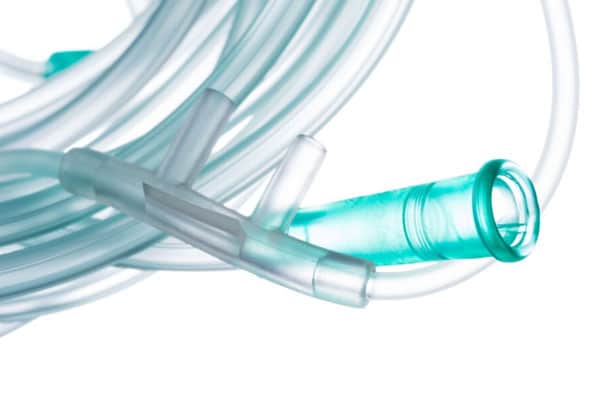Medical device manufacturers face a critical decision when selecting materials for their products. The choice between liquid silicone rubber molding and traditional rubber affects product quality, patient safety, and manufacturing costs. For compelling reasons, more companies are making the switch to liquid silicone rubber molding.
This shift represents a fundamental change in how medical devices are manufactured. Understanding the differences between these materials can help you make informed decisions about your medical device projects.
What Makes Liquid Silicone Rubber Molding Superior for Medical Applications
Liquid silicone rubber molding offers distinct advantages over conventional rubber materials. The process uses a two-component platinum-catalyzed system that creates exceptionally pure products. This purity is crucial for medical applications where contamination poses serious risks.
Traditional rubber contains sulfur-based curing agents that can leach harmful substances. Liquid silicone rubber molding eliminates this concern by using clean platinum catalysts. The result is a biocompatible material that meets strict medical standards.
The molecular structure of liquid silicone rubber molding provides superior flexibility and durability. Your medical devices maintain their properties across extreme temperature ranges from -65°F to 400°F, while traditional rubber degrades quickly under these conditions.
Key benefits include:
- Exceptional biocompatibility for direct patient contact
- Superior chemical resistance to sterilization processes
- Transparent options for visual inspection
- Long-term stability without degradation
- Precise dimensional control for critical applications
Advantages of Liquid Silicone Rubber Molding
The manufacturing process for liquid silicone rubber molding delivers consistent results that traditional rubber cannot match. The automated injection process eliminates human error and reduces contamination risks. Your production runs achieve uniform quality from the first part to the last.
Liquid silicone rubber molding requires lower processing temperatures than traditional rubber. This reduces energy costs and allows for more delicate component integration. The shorter cure times increase production speed without compromising quality.
Traditional rubber molding requires multiple post-processing steps, including trimming and cleaning. Liquid silicone rubber molding produces finished parts with minimal secondary operations, streamlining your manufacturing process and reducing labor costs.
The precision of liquid silicone rubber molding enables thin-wall construction and complex geometries. Intricate designs can be created that would be impossible with traditional rubber molding techniques.
Liquid Silicone Rubber Molding vs Traditional Rubber for Medical Devices
Initial material costs for liquid silicone rubber molding appear higher than those for traditional rubber. This narrow view misses the total cost picture. Liquid silicone rubber molding delivers significant savings through reduced processing time, fewer defects, and longer product lifecycles.
Traditional rubber requires extensive quality control testing due to batch-to-batch variations. Liquid silicone rubber molding maintains consistent properties that reduce testing requirements. Thus, your quality assurance costs decrease while you maintain superior product standards.
The durability of liquid silicone rubber molding significantly extends product lifecycles. Medical devices last longer in service, reducing replacement costs for healthcare providers. This creates competitive advantages for your products in the marketplace.
Sterilization compatibility saves substantial costs over time. Liquid silicone rubber molding withstands repeated sterilization cycles without degradation, while traditional rubber often requires replacement after limited sterilization exposure.
Regulatory Compliance and Liquid Silicone Rubber Molding in Medical Manufacturing
Medical device regulations demand strict material traceability and consistency. Liquid silicone rubber molding provides complete batch documentation and predictable properties. Regulatory submissions become straightforward with comprehensive material data.
FDA approval processes favor materials with established safety profiles. Liquid silicone rubber molding has extensive biocompatibility data supporting medical applications, while traditional rubber requires additional testing to demonstrate safety equivalence.
Liquid silicone rubber molding simplifies ISO 13485 compliance due to process consistency. Predictable manufacturing outcomes benefit your quality management systems, and standardized material properties reduce documentation requirements.
The traceability of liquid silicone rubber molding raw materials supports recall procedures if needed. Complete supply chain visibility protects your company and patients. Traditional rubber supply chains often lack this level of documentation.
Implementation Considerations for Liquid Silicone Rubber Molding
Transitioning from traditional rubber to liquid silicone rubber molding requires careful planning. Design modifications may be necessary to optimize part performance with the new material. Your engineering team should evaluate current designs for compatibility with liquid silicone rubber molding.
Tooling requirements differ between traditional rubber and liquid silicone rubber molding. Investment in new molds delivers long-term benefits through improved part quality and faster cycle times. The precision of liquid silicone rubber molding tooling enables tighter tolerances.
Training your manufacturing team on liquid silicone rubber molding processes ensures successful implementation. The process’s automated nature reduces learning curves compared to traditional rubber handling.
Supply chain partnerships become critical for liquid silicone rubber molding success. Working with experienced suppliers ensures material quality and technical support throughout your transition.
Liquid silicone rubber molding represents the future of medical device manufacturing. The combination of superior material properties, manufacturing advantages, and regulatory benefits makes the switch inevitable for quality-focused companies—your investment in liquid silicone rubber molding technology positions your medical devices for market success.
Looking for reliable liquid silicone rubber molding manufacturing services? Contact LT Century today to streamline your production process with expert outsourcing solutions.
Reference
*Image from https://www.medteclive.com/

